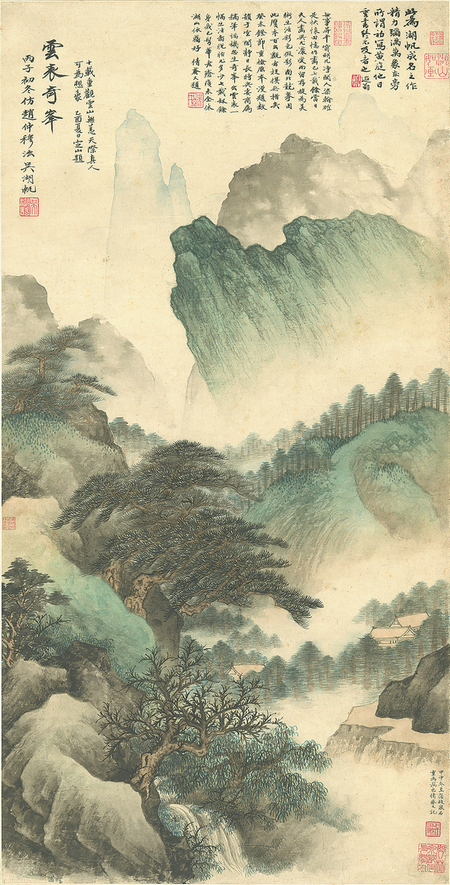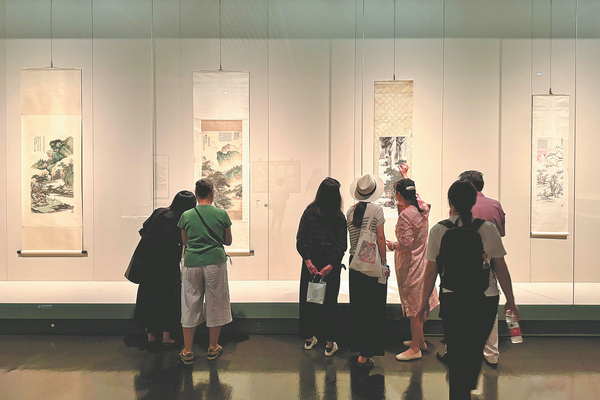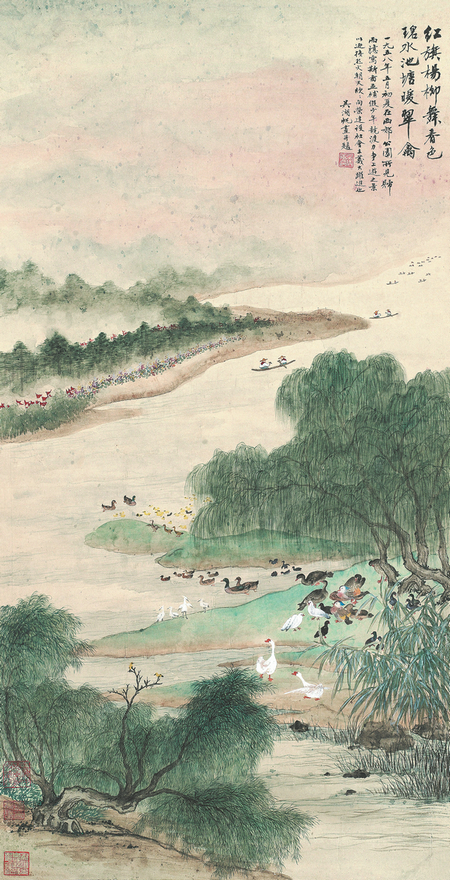
Master's Works Bring Modernity to Traditional Painting

As one of Shanghai's most representative Chinese ink painting artists, Wu Hufan (1894-1968) is famous for his landscape paintings which showcase his superb use of light and vivid colors. An ongoing exhibition at the China Art Museum Shanghai displays some of his most celebrated creations.
Opened on Aug 6, A Unique Peak of Shanghai: the Exhibition of Wu Hufan brings more than 80 paintings and calligraphy works from collections of the China Art Museum Shanghai, the Shanghai Chinese Painting Academy, Suzhou Museum in Jiangsu province, the Shanghai History Museum and Duoyunxuan, as well as private collectors. The exhibition runs until Oct 27.
The China Art Museum Shanghai has hosted a series of group exhibitions in the past few years, elaborating on the characteristics and development of a distinctive "Shanghai Style", or haipai, of modern Chinese art, according to Wang Yichuan, executive director of the museum.
"We wanted to explore this direction and focus on specific artists. We chose Wu as the first featured figure because he made a great impact on China's art scene in the latter half of the 20th century."

This year marks the 130th anniversary of Wu Hufan's birth.
The Shanghai museum chose to present his solo exhibition to "illustrate how traditional Chinese ink art impacted the early 1900s and modern artists such as Wu inherited and innovated the great traditions of ink art in the Jiangnan region (south of the lower reaches of the Yangtze River), turning a new page for modern Chinese art and proving the strong vitality of traditional Chinese ink painting", said Chen Xiang, the academic director for the exhibition and the vice-chairman of the Shanghai Artists' Association, at the opening ceremony on Aug 5.
Wu was born in an esteemed house in Suzhou, Jiangsu province, as the grandson of renowned scholar Wu Dazheng (1835-1902). Since childhood, he inherited the rich heritage of literati art. In 1924, he moved to Shanghai where he was exposed to modern urban culture.

Wu Hufan introduced Chinese ink painting to bright colors and imagery favored by ordinary folks, bringing art close to people's daily lives, opposite to the interest of the refined intellectuals who treated art as a way to express their spiritual pursuits, Chen says.
In 1936, Wu Hufan's landscape painting Yun Biao Qi Feng, or The Steep Peaks Above the Clouds, made a splash when it was exhibited in Shanghai. It is a Chinese ink painting but its perspective, light and dark shadow contrasts and rich layers of colors remind people of Western paintings. The piece gave Chinese ink painting a new look and immediately made Wu Hufan famous in China's art scene.
While many Chinese artists in the country at that time found new methods and inspiration in the cultural clash between the East and the West, tradition and modernity, Wu Hufan "chose a path less-taken", according to Chen.
He held tight to his roots and introduced new influences to enrich his expression, pushing the modernization of Chinese ink art. "I believe it is relevant today, as Chinese ink art is still developing and looking for new directions," Chen adds.